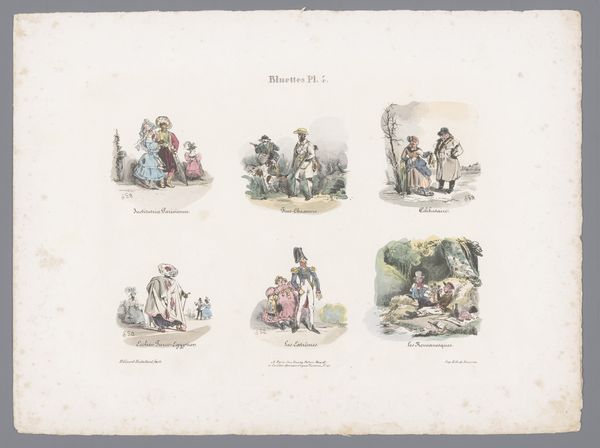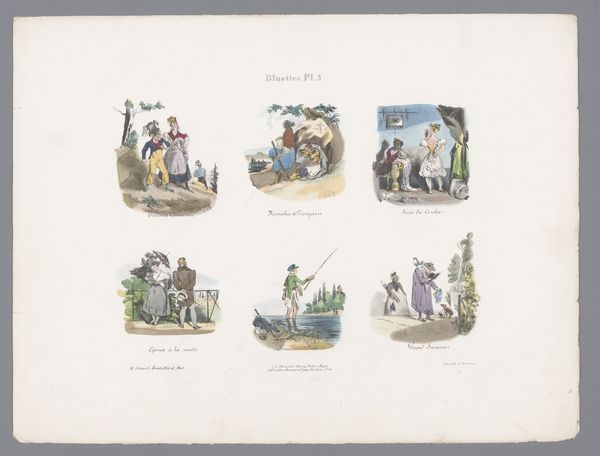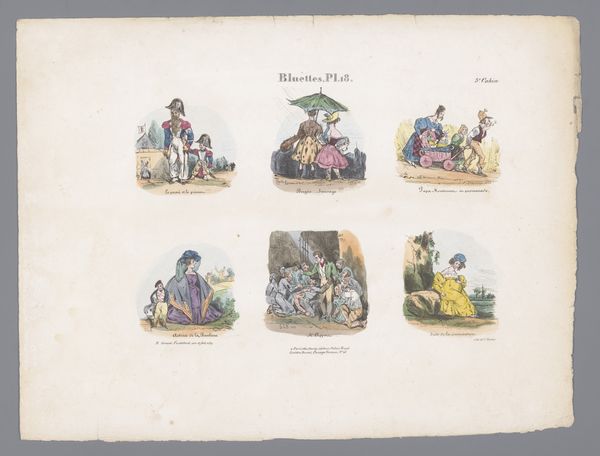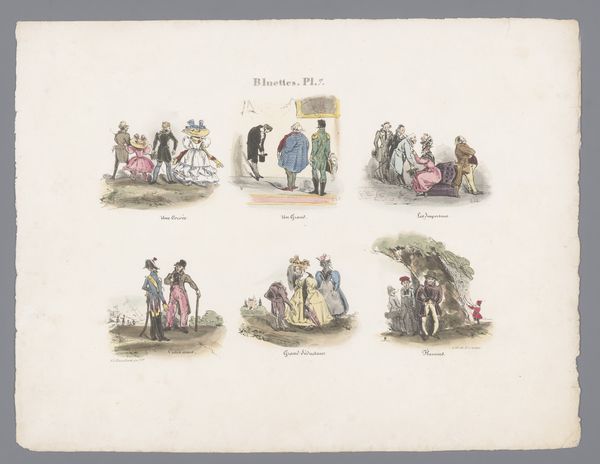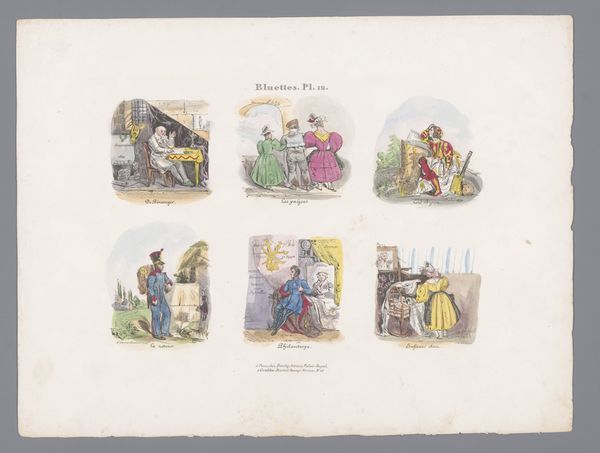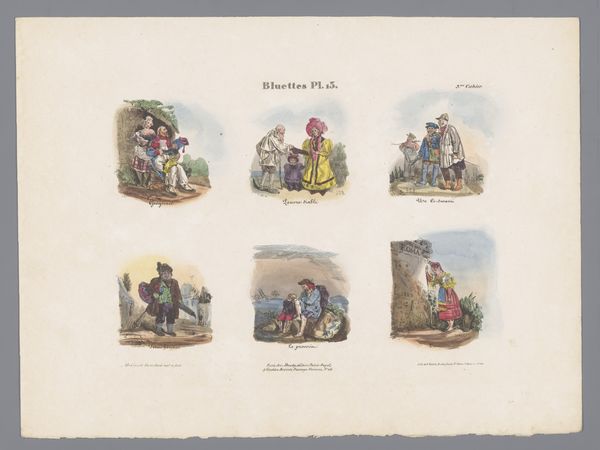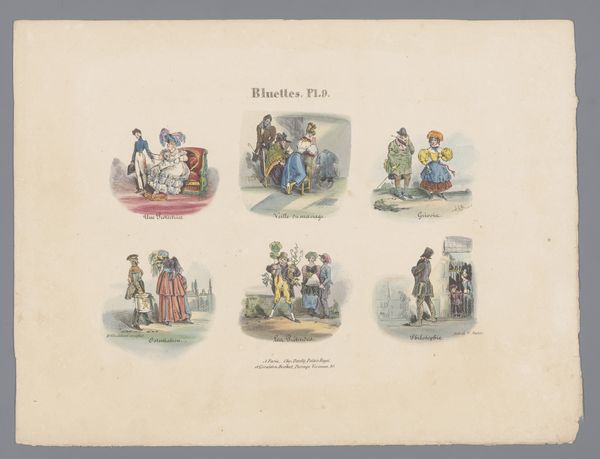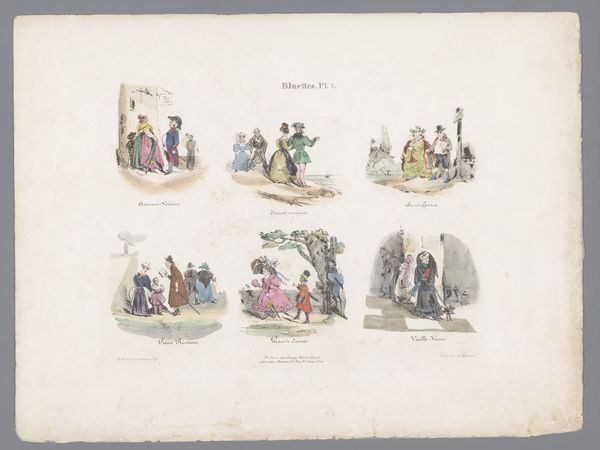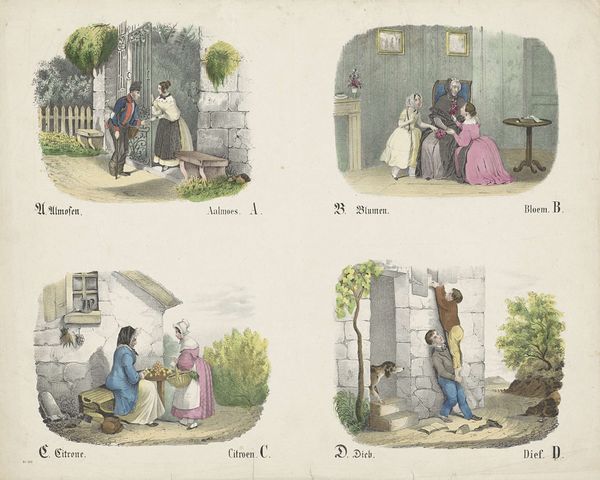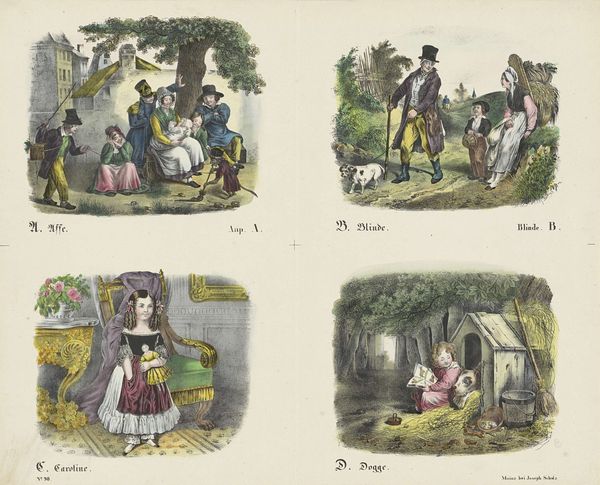
print, watercolor
#
water colours
#
narrative-art
# print
#
figuration
#
watercolor
#
romanticism
#
watercolour illustration
#
genre-painting
#
watercolor
Dimensions: height 275 mm, width 364 mm
Copyright: Rijks Museum: Open Domain
Curator: This watercolor print, created in 1829 by Henri-Gérard Fontallard, is entitled "Zes scènes met diverse personen," or "Six Scenes with Various People." My first impression? These vignettes, they feel like brief glimpses into a play. Each miniature scene conveys a different emotion, almost like chapters in a social commentary. Editor: I'm immediately drawn to the materiality of it. A print, made with watercolors; how does that production challenge traditional assumptions about what art is for, who it’s for, and how much it costs? This work appears intended for mass consumption, using accessible materials to reproduce images. I’d ask whether we can explore more deeply the processes through which these illustrations become distributed and their intended audience. Curator: That’s a valuable perspective, grounding it in its means of creation. And precisely because it's a print, it democratized art viewing at the time. Regarding your suggestion of social analysis, looking at these various scenes and thinking of its era, Romanticism...I'm drawn to the potential hidden critique here. Observe the expressions and poses – are they straightforward depictions or subtle digs at societal norms and power structures? Editor: Agreed. It demands a closer look at what Fontallard, through these romanticized visuals, wants us to consider. Are these scenes celebrations or critiques? I am looking especially at the scene of domestic workers gathered near an alcove. Is the scene sympathetic or subtly exploiting the visual conventions through which one may view labor, class, and domestic space? Curator: Exactly! The figures’ positioning suggests different roles and their relations. How is the print trying to solidify or destabilize existing hierarchies and conventions? The choice of watercolour, the print-making… even the seeming frivolity is speaking volumes if we think of gender and access during the Romanticism movement. Editor: It forces us to look beyond just the aesthetic appeal to truly evaluate the historical and social conditions in which Fontallard was making work. It brings us beyond simply surface reading to truly inquire on what the art is doing, and on which layers of labor it relies. Curator: Well, for me this has transformed my initial perception into an opportunity to reassess not just individual stories but the bigger cultural narrative the artwork encapsulates. It's exciting when a simple image sparks layers of questions on the power dynamics it could mirror or subvert! Editor: Indeed. Now that I see it this way, I also agree, this piece transcends mere aesthetic enjoyment; it provokes inquiries into artistic production, social relationships, and potential power dynamics implicit within such portrayals.
Comments
No comments
Be the first to comment and join the conversation on the ultimate creative platform.
